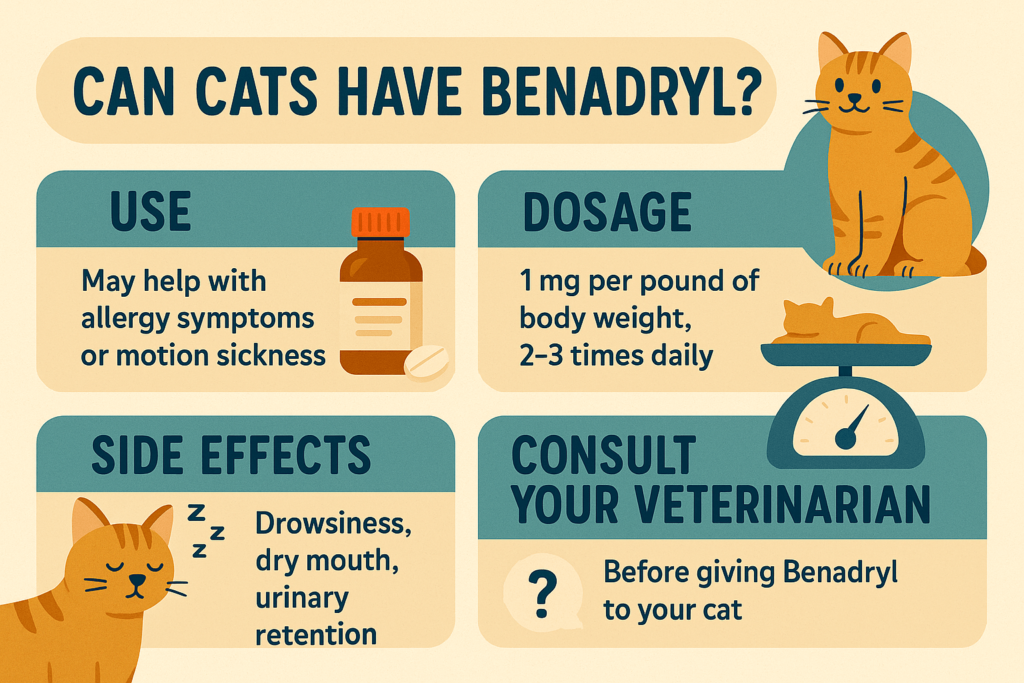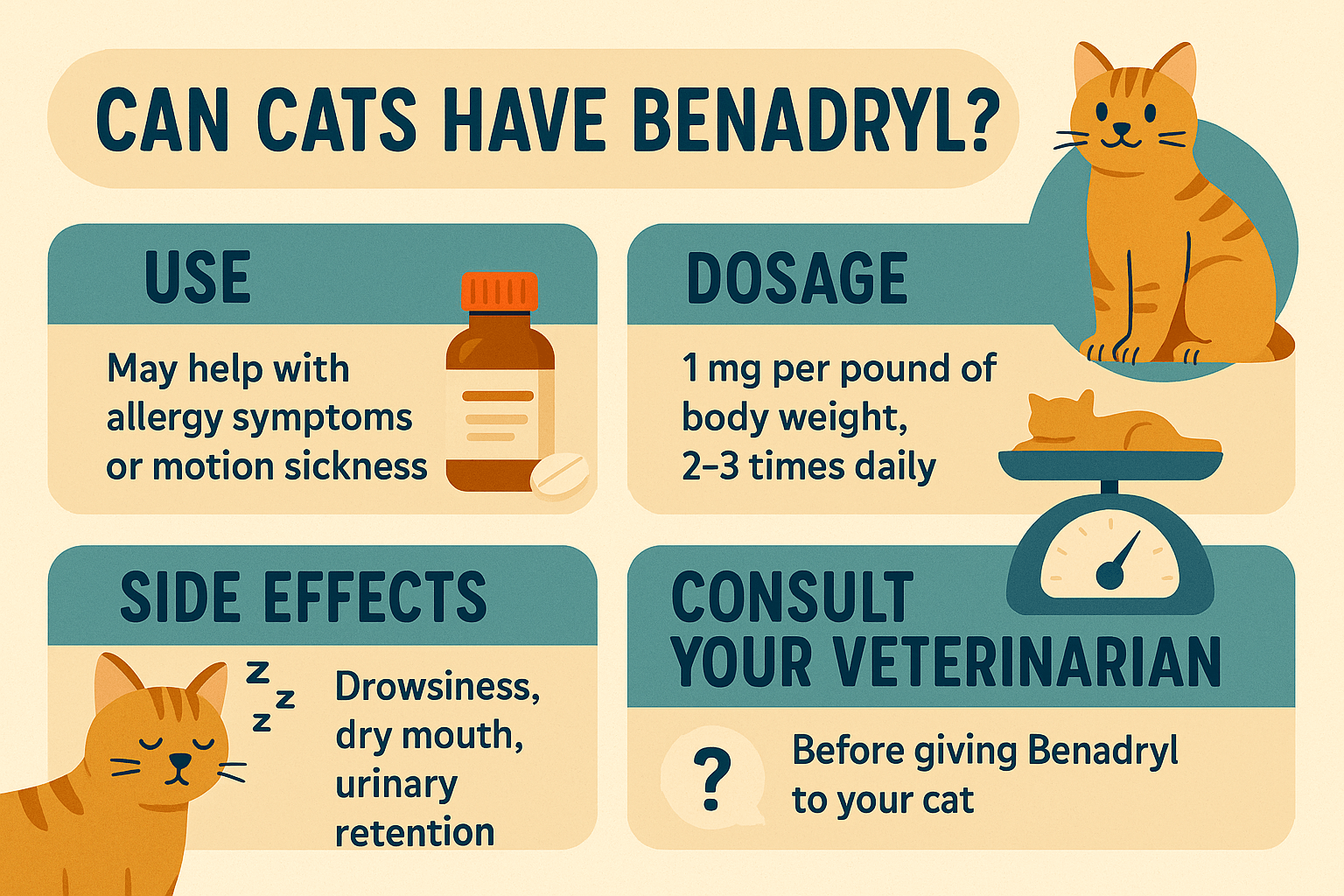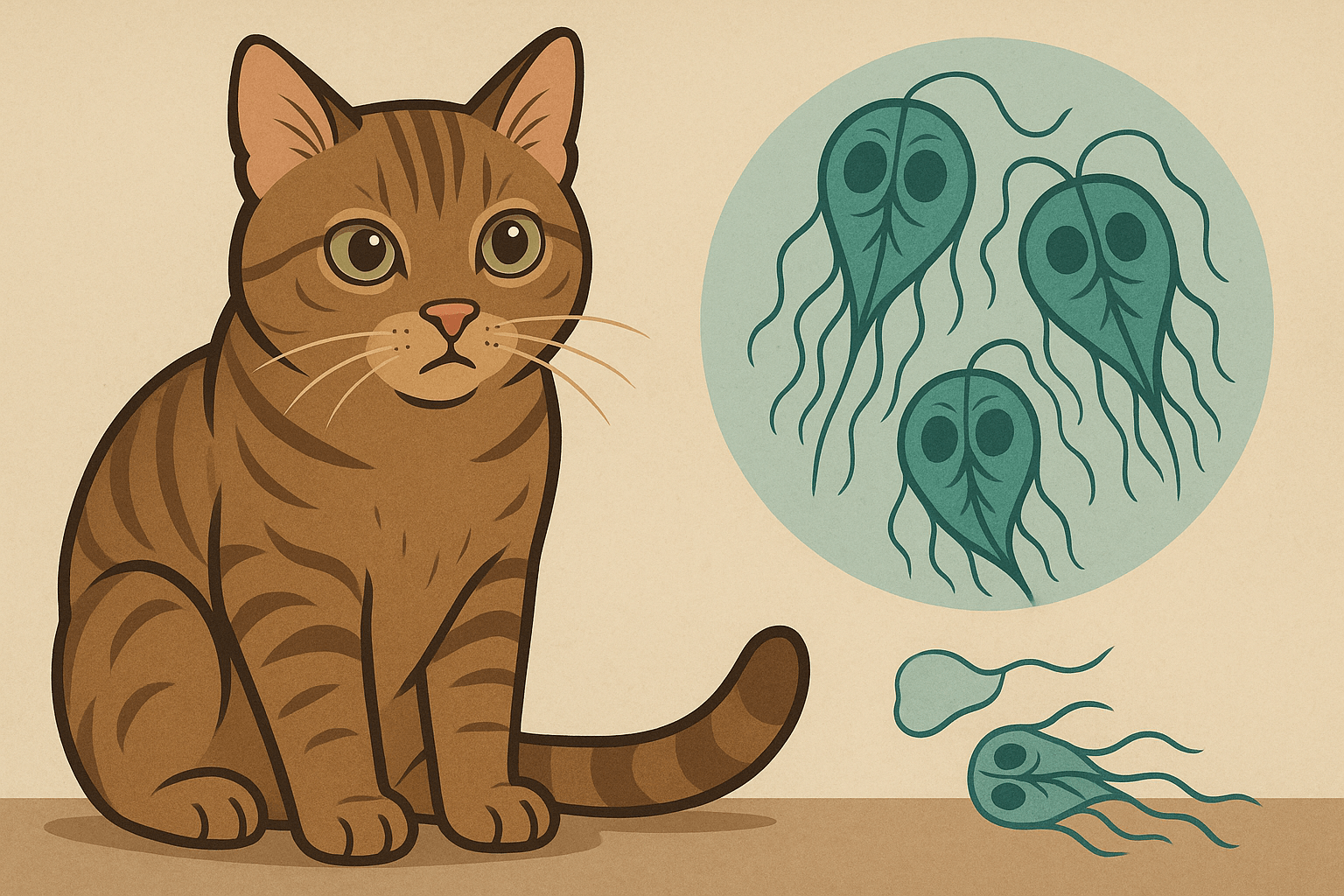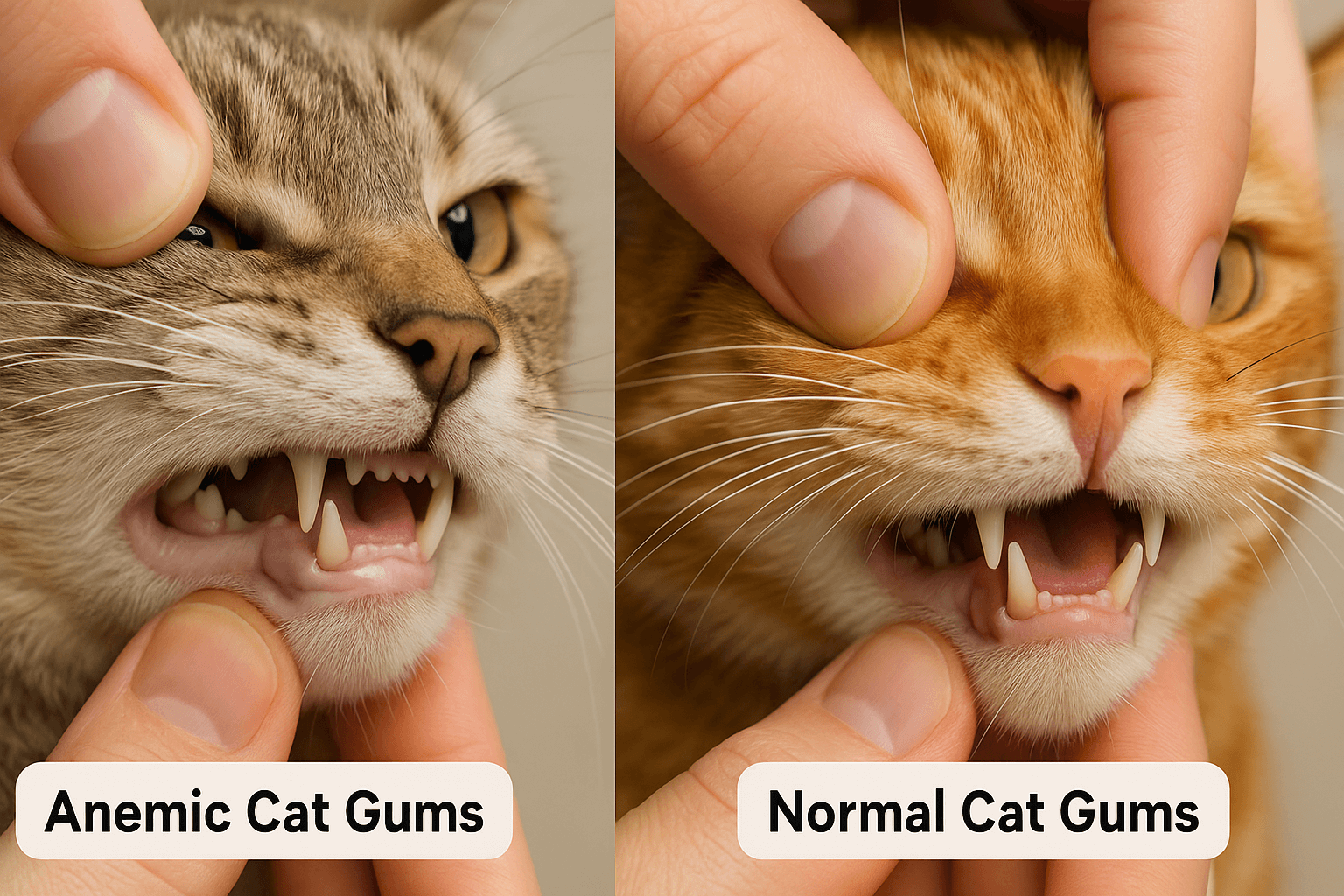Can Cats Have Benadryl?
When it comes to managing your cat’s health, you may find yourself wondering if human medications like Benadryl are safe for feline use. Benadryl, a common over-the-counter antihistamine, is often used to relieve allergy symptoms in humans. However, cats have unique physiological needs, and what works for us doesn’t always work for them. While Benadryl can be administered to cats under certain circumstances, it’s crucial to understand the risks, dosages, and alternatives before giving it to your furry friend. This guide will walk you through everything you need to know about using Benadryl safely for cats, ensuring their well-being remains your top priority.
Expert Opinion on Using Benadryl for Cats
“For a healthy adult cat, diphenhydramine is considered safe to use but should only be given under the direction of your veterinarian. Benadryl for cats should never be administered without specific diagnostic and dosing advice from your vet.”
When Can Cats Safely Take Benadryl?
Benadryl can be beneficial for cats in specific situations, but its use should always align with veterinary guidance. Here are some scenarios where Benadryl might be recommended for your cat.
Allergic Reactions:
Benadryl can help alleviate mild allergic reactions caused by insect bites, environmental allergens, or food sensitivities.Motion Sickness:
The sedative effects of Benadryl may reduce anxiety and nausea during car rides, making travel more comfortable for your cat.Itchy Skin or Hives:
If your cat experiences itching or hives due to an allergic reaction, Benadryl can provide temporary relief from discomfort.Mild Anxiety:
In some cases, veterinarians may suggest Benadryl to calm anxious cats during stressful events like fireworks or vet visits.Pre-Surgical Sedation (Under Supervision):
Veterinarians sometimes use Benadryl as part of a pre-anesthetic protocol to relax cats before surgery.
While Benadryl has its uses, it’s essential to consult your vet before administering it to ensure it’s appropriate for your cat’s specific condition.

How to Administer Benadryl Safely to Your Cat
If your veterinarian approves the use of Benadryl for your cat, proper administration is key to avoiding complications. Follow these guidelines to ensure safety and effectiveness.
Determine the Correct Dosage:
The typical dosage is 1 mg of Benadryl per pound of body weight, but this can vary based on your cat’s health and size. Always confirm with your vet.Use Only Diphenhydramine HCl:
Ensure the product contains only diphenhydramine HCl, the active ingredient in Benadryl. Avoid formulations with added ingredients like acetaminophen or pseudoephedrine, which are toxic to cats.Administer Orally:
You can give Benadryl orally by mixing it with wet food or using a syringe (without a needle) to gently place the liquid into your cat’s mouth.Monitor for Side Effects:
Watch for signs of lethargy, vomiting, diarrhea, or difficulty breathing after administration. Contact your vet immediately if adverse reactions occur.Avoid Long-Term Use:
Benadryl is intended for short-term relief. Prolonged use without veterinary supervision can lead to health complications.
By following these steps, you can minimize risks and maximize the benefits of Benadryl for your cat.
Check this guide 👉Understanding Cat Pregnancy Tests: Best 7 Expert Tips!
Check this guide 👉How Do Cats Lay When Pregnant? Best 7 Expert Tips!
Check this guide 👉Pregnant Cat Behavior: Best 7 Expert Tips!
Benefits of Using Benadryl for Cats | Potential Risks of Benadryl for Cats |
|---|---|
Relieves mild allergic reactions | Risk of overdose if dosage is incorrect |
Reduces motion sickness | Possible side effects like drowsiness |
Calms anxiety during stressful events | Toxicity from incorrect formulations |
Alleviates itching and skin irritation | May mask underlying health issues |
Safe for short-term use when supervised | Not suitable for long-term treatment |
Signs Your Cat May Need Benadryl
Before reaching for Benadryl, it’s important to recognize the signs that indicate your cat may benefit from this medication. These symptoms often point to allergies or stress-related issues.
Excessive Scratching or Licking:
Persistent scratching or licking could signal an allergic reaction causing skin irritation.Swelling or Hives:
Visible swelling around the face, paws, or ears may indicate an allergic response requiring immediate attention.Sneezing or Watery Eyes:
Seasonal allergies can cause sneezing, nasal discharge, or watery eyes, which Benadryl may help alleviate.Anxiety-Induced Behaviors:
Excessive vocalization, pacing, or hiding during stressful events may suggest anxiety that Benadryl can temporarily ease.Insect Bites or Stings:
Swelling or redness at the site of a bite or sting can be soothed with a carefully measured dose of Benadryl.
If your cat exhibits any of these signs, consult your veterinarian to determine if Benadryl is the right solution.
Alternatives to Benadryl for Managing Cat Allergies
While Benadryl can be helpful, there are other ways to address your cat’s allergies or stress without relying on medication. These alternatives focus on prevention and natural remedies.
Hypoallergenic Diet:
Switching to a hypoallergenic diet can help identify and eliminate food-based allergens triggering your cat’s symptoms.Regular Grooming:
Bathing and brushing your cat removes allergens like pollen or dust from their coat, reducing skin irritation.Air Purifiers:
Using air purifiers in your home can minimize airborne allergens, creating a cleaner environment for your cat.Stress-Relief Products:
Items like pheromone diffusers or calming sprays can naturally reduce anxiety without medication.Veterinary Allergy Testing:
Allergy tests performed by your vet can pinpoint specific triggers, allowing for targeted treatment plans.
Exploring these options ensures your cat receives comprehensive care tailored to their needs.
Common Misconceptions About Benadryl for Cats
There are several myths surrounding the use of Benadryl for cats. Clearing up these misconceptions helps you provide safer care for your pet.
Myth: Any Human Medication Is Safe for Cats:
Many human medications, including certain formulations of Benadryl, can be toxic to cats. Always check with your vet first.Myth: Higher Doses Work Faster:
Increasing the dosage beyond recommendations can harm your cat rather than speed up recovery. Stick to prescribed amounts.Myth: Benadryl Cures Allergies Permanently:
Benadryl only provides temporary relief; it doesn’t address the root cause of allergies.Myth: Cats Can’t Overdose on Benadryl:
Even small overdoses can lead to serious complications, especially in smaller breeds or kittens.Myth: Liquid Medications Are Easier to Administer:
While true in some cases, liquid formulations must still meet strict safety criteria to avoid toxicity risks.
Understanding these facts ensures you approach Benadryl use responsibly and safely.
Signs of an Adverse Reaction to Benadryl
Knowing how to identify adverse reactions to Benadryl can save your cat from unnecessary suffering. Be vigilant for these warning signs after administration.
Lethargy or Weakness:
Extreme drowsiness or inability to move normally may indicate an overdose or sensitivity to the medication.Vomiting or Diarrhea:
Gastrointestinal upset can occur if your cat’s system reacts poorly to Benadryl.Difficulty Breathing:
Labored breathing or wheezing requires immediate veterinary attention, as it could signal a severe allergic reaction.Increased Heart Rate:
A racing heart rate is a red flag that your cat may be experiencing cardiac stress from the medication.Loss of Coordination:
Stumbling or appearing disoriented suggests neurological effects that need urgent care.
Recognizing these symptoms early allows you to act quickly and protect your cat’s well-being.
Preventive Measures to Reduce Allergy Triggers
Taking proactive steps to minimize allergens in your home can reduce the need for medications like Benadryl. These preventive measures promote long-term comfort for your cat.
Keep Windows Closed During Pollen Season:
Limiting outdoor allergens indoors helps prevent seasonal flare-ups in sensitive cats.Wash Bedding Regularly:
Cleaning your cat’s bedding removes dust mites and other irritants that can trigger allergies.Vacuum Frequently:
Using a vacuum with a HEPA filter captures allergens embedded in carpets and furniture.Bathe Your Cat Occasionally:
Gentle baths with hypoallergenic shampoo remove allergens clinging to your cat’s fur.Limit Exposure to Strong Scents:
Avoid using perfumes, candles, or cleaning products with strong odors that can irritate your cat’s respiratory system.
By implementing these strategies, you create a healthier environment that supports your cat’s overall well-being.
Frequently Asked Questions About Giving Cats Benadryl
Is Benadryl safe for all cats?
No, Benadryl isn’t safe for every cat. Always consult your veterinarian before administering it.
What happens if I give my cat too much Benadryl?
Overdosing can lead to severe side effects like seizures, rapid heartbeat, or respiratory distress. Seek emergency care immediately.
Can kittens take Benadryl?
Kittens require special care and smaller doses. Never give Benadryl to a kitten without veterinary approval.
Are there any long-term side effects of Benadryl?
Long-term use can harm your cat’s liver or kidneys. It’s best reserved for short-term relief under supervision.
Can I use liquid Benadryl instead of tablets?
Yes, but ensure the liquid contains only diphenhydramine HCl and measure the dosage precisely.
Prioritizing Your Cat’s Health When Considering Benadryl
While Benadryl can provide temporary relief for certain conditions, it’s not a one-size-fits-all solution for your cat’s health challenges. Understanding its uses, limitations, and potential risks empowers you to make informed decisions about your pet’s care. Always prioritize consultation with your veterinarian before introducing any new medication or treatment. By combining professional advice with attentive observation, you can ensure your cat stays happy, healthy, and comfortable—whether they need Benadryl or not.
Giardia in Cats: Best 7 Expert Tips! Discover expert advice on identifying, treating, and preventing giardia in cats to ensure your feline stays happy and healthy.
Cat Hyperventilating: Best 7 Expert Tips! Discover signs, causes, and solutions for cat hyperventilation. Learn how to calm your cat and when to seek veterinary care for their breathing issues.
Anemic Cat Gums vs Normal: Best 7 Expert Tips! Learn to spot signs of anemia in cats, understand gum health, and ensure your feline stays happy and healthy with expert advice.
Himalayan Cat Size: Best 7 Expert Tips! Discover expert advice on Himalayan cat size, growth factors, care tips, and how to ensure your feline stays healthy and happy.





